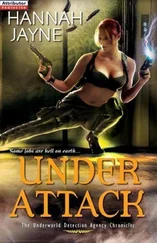1 ...7 8 9 11 12 13 ...32 At midday on Sunday, 8 September, the Prime Minister, Winston Churchill, came to the East End with Duncan Sandys MP, who was married to Churchill’s daughter Diana, his brother Jack, and his Chief of Staff, Major-General Hastings Ismay, * to inspect the damage for himself. They found the destruction much more devastating ‘than they had imagined … Fires were still raging all over the place. Some of the large buildings were mere skeletons, and many of the smaller houses had been reduced to rubble.’ Clambering over the debris, Churchill went first to visit an air-raid shelter in Columbia Road, Shoreditch, home of the flower market, where ‘about 40 of the inmates had been killed and a very large number wounded. The place was full of people searching for their lost belongings when you arrived,’ Ismay reminded his boss later when Churchill wanted to include the poignant occasion in his History of the Second World War .
The Columbia Road bomb had been a particularly tragic introduction to the events of the next few months. In what the Daily Herald journalist Ritchie Calder called ‘a million to one chance’, a bomb had crashed directly through a ventilation shaft measuring only three feet by one foot, below which lay a shelter containing more than a thousand people.
Mothers were killed outright before they had a chance to protect their children. Babies were swept from perambulators. Three or four support pillars were torn down and about 50 people lay in stunned heaps … Perambulators and corrugated iron lay entangled at the scene.
… Although explosions could be heard in all directions and the scene was illuminated by the glow of the East End fires, civil defence workers laboured fearlessly and feverishly among the debris, seeking the wounded, carrying them to safe places, tending their injuries.
Nine doctors answered an S.O.S. and saved lives by improvising tourniquets. They dressed wounds by the dim glow of torches. In one family three children were killed. Their parents escaped. One man, when the smoke and noise had died down, searched for his wife, found her lying on the ground and turned her over. She was dead.
However, as Ismay noted of ‘the big crowd, male and female, young and old, all seemingly very poor[, while] one might have expected them to be resentful against the authorities responsible for their protection … They stormed [Churchill] as he got out of the car with cries of “It was good of you to come Winnie. We thought you’d come. We can take it. Give it back.” ‘Or so Ismay remembered. ‘It was a very moving scene. You broke down completely and I nearly did, as I was trying to get you through the press of bodies, I heard an old woman say, “You see, he really cares, he’s crying …” Later we found many pathetic little Union Jacks flying on piles of masonry that had once been the homes of poor people.’
The point of the visit was to boost morale and show the nation that its leader was sympathetic to the East Enders’ ordeal, and Churchill was snapped by press photographers as he bounded tirelessly from one bomb site to the next. But the Ministry of Information, anxious that no information on the effects of the raids should be seen by German Intelligence, scratched anything from the negatives that might indicate the location and the full extent of the damage before a select few photographs of the prime ministerial tour appeared in the press.
It was getting dark when Churchill set off back to Downing Street, although the flames of the previous night’s fires still illuminated the sky. The Prime Minister’s car ‘had a long job getting through the narrow streets, many of which were blocked by houses having been blown across them’. While the East End had taken the main impact of the bombs, some had fallen elsewhere – near Victoria station, along the banks of the Thames from Vauxhall Bridge to Putney Bridge (Battersea Power Station was put out of action), and in parts of west London. The seat of government was bound to be a target, although Churchill was extremely reluctant to leave his official London home (he had been obliged to shut his family’s country house, Chartwell in Kent, during the Battle of Britain that summer). But 10 Downing Street was no longer regarded as a safe haven for Britain’s inspirational wartime leader, even though, in a flurry of works that had necessitated Churchill moving for a few nights to the Carlton Hotel in nearby Belgravia, a shelter had been built in the garden, and a dining room and sitting room set up in the basement, which Jock Colville thought resembled ‘third-class accommodation on a Channel steamer’. The question of where to keep Britain’s principal wartime asset led to a tussle that would continue between the obstinate Prime Minister and his staff and advisers throughout the early days of the blitz.
That Sunday, the second night of the blitz, bombs fell again on the docks, reigniting fires that were still smouldering, starting new ones, and stretching the line of fire and destruction along the banks of the Thames: soon twelve conflagrations were lighting up the sky, and testing the resources of the fire services to their limit once again. The two hundred German planes pounded the City too. Every railway line out of London to the south was put out of action, and factories and offices were destroyed, as were more homes. Four hundred and twelve Londoners were killed that night, and 747 seriously injured.
Gerry Knight, who had memorably thought ‘the whole bloody world’s on fire’ the previous night, was on duty again at Pageant’s Wharf fire station when the bombs started to drop. One fell on the station killing Knight and a colleague, Auxiliary Fireman Dick Martin. All that could be found to identify the forty-four-year-old Knight were his standard issue thigh-high fireman’s boots.
When the photographer Bert Hardy visited the East End two days later, ‘he said it was like the end of the world’, reported Alan Hutt. ‘Whole streets down and gone. East End soldiers deserting to rush home and frantically try to find their folks … A man and a woman sitting on a pile of wreckage staring listlessly in front of them without speech … Revolting stories of official red tape in dealing with refugees and bereaved survivors … climaxing in the hideous affair of the refugees bunged into one East End School on Saturday night to be all bombed to death on Sunday [sic].’
This ‘hideous affair’ made unbearably raw all the fears and many of the tensions of the blitz just a day after it started. A rest centre had been established at South Hallsville School in Agate Street, Canning Town, and it was there that six hundred men, women and children had been led on Saturday night after it had been decided to evacuate the local area. The refugees were in a state of acute shock. Most had lost their homes; for some, members of their family had been killed or wounded, or were missing; they had few if any possessions; their clothes were torn and dirty, their faces blackened by smoke and soot, often caked with blood, their feet burned and lacerated. They clung to each other, terrified, confused, some hysterical, others racked with uncontrollable anger, others traumatised and unable to speak. Rest centre staff, hopelessly unprepared for such a sudden influx, themselves shocked and anxious, bustled around offering cups of tea – that ubiquitous British panacea – trying to find blankets for the refugees, many of whom were only wearing thin nightclothes, offering reassurance as bombs crashed all around and shrapnel grazed the walls: ‘Don’t worry, you’ll be all right. We’ll get you away.’
That day Ritchie Calder had sought out the Reverend Paton, a popular East End priest known locally as ‘the Guv’nor’, whose dockland church had been bombed the previous night.
His pulpit still stood, but the roof and front wall had gone … I found ‘The Guv’nor’ at last, he was ashen grey with the anguish of the night. He had been out in the raids, helping his people throughout the night. His lips trembled and his eyes filled with tears when he spoke of his friends who were dead, injured or missing. But his main concern was for the living. He was dashing round the streets seeking out the survivors whose homes had been wrecked.
Читать дальше












